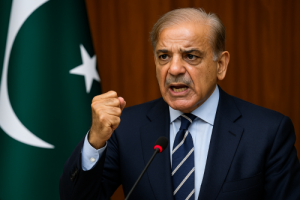What Happens Next After Pope Francis’ Death? A Look at the Vatican’s Time-Honored Process

What Happens Next After Pope Francis' Death? A Look at the Vatican’s Time-Honored Process
The death of a pope isn’t just a moment of mourning for the Roman Catholic Church—it also triggers one of the most fascinating and ancient transitions of leadership in the modern world. While Pope Francis remains alive as of this writing, it’s natural to wonder what comes next when a sitting pope passes away.
Let’s break down what happens after a pope’s death, from the official announcement to the election of a new leader of the world’s 1.3 billion Catholics.
The Moment the Pope Dies: What the Vatican Does First
When a pope dies, the first priority is confirming his death. This isn’t done by just any doctor. Traditionally, the Vatican’s head physician must verify the death, and historically, the Camerlengo (Chamberlain of the Holy Roman Church) plays a central role.
The Camerlengo is the Vatican official responsible for managing the Church’s affairs in the period between popes, known as the “sede vacante” or “vacant seat.” He officially confirms the pope’s death and seals the papal apartments. The Ring of the Fisherman—a symbol of papal authority—is destroyed to prevent forgery.
Global Mourning and Funeral Rites
Within minutes of the announcement, churches across the globe toll their bells, and Catholics begin a period of mourning. The pope’s body is typically displayed in St. Peter’s Basilica, where thousands line up to pay their respects.
The funeral usually takes place within four to six days after the pope’s death. Heads of state, religious leaders, and faithful followers from around the world gather in Vatican City for the ceremony.
No Pope in Power: The Sede Vacante Period
Once the pope dies, the Vatican enters a transitional phase. During the sede vacante, all major decisions within the Church are paused. The Camerlengo oversees day-to-day operations, but cannot make policy changes or appointments. Think of it as a caretaker government.
All cardinals under the age of 80 are summoned to Rome. They are the ones who will eventually vote for the next pope in what’s called a conclave.
The Conclave: Choosing the Next Pope
The word conclave literally means “with a key,” referring to the secrecy of the event. Cardinals are locked inside the Sistine Chapel—yes, the one with Michelangelo’s famous ceiling—until they elect a new pope.
Each cardinal casts one vote per round. A candidate must receive a two-thirds majority to be elected. The process can take days or even weeks, depending on how split the votes are.
Once someone is chosen, he is asked, “Do you accept your canonical election as Supreme Pontiff?” If he says yes, he chooses a papal name, and the world soon hears the iconic words: “Habemus Papam!” (“We have a pope!”).
White Smoke vs. Black Smoke: A Centuries-Old Signal
Wondering how the public knows what’s happening inside the conclave? The answer is smoke.
After each round of voting, the ballots are burned. If no decision is made, the smoke coming from the chapel chimney is black. When a pope is elected, a chemical is added to make the smoke white.
Crowds watching from St. Peter’s Square cheer as the white smoke rises, signaling that a new pope has been chosen.
What Happens to the Vatican During the Transition?
The Vatican doesn’t stop running, but it does go into a sort of “pause mode.” No new policies are introduced, and the heads of most Vatican departments lose their positions, which will later be filled by the new pope.
The media spotlight remains intense. Every word, signal, and decision is scrutinized. For millions of Catholics, this is more than just a changing of the guard—it’s a spiritual moment filled with hope, uncertainty, and global attention.
Could the Pope Resign Instead of Dying?
Interestingly, yes. Pope Benedict XVI shocked the world in 2013 when he became the first pope in nearly 600 years to resign. Should Pope Francis choose that path, the process would be different, but many of the same structures—like the conclave—would still apply.
Final Thoughts: A Time of Reflection and Renewal
The death of a pope is more than the passing of a religious figure; it’s a global event that unites Catholics and non-Catholics alike in reflection. While the process of mourning and transition is steeped in centuries-old tradition, it also speaks to the continuity of the Catholic Church in a fast-changing world.
No one knows when Pope Francis’ time will come, but the Church is prepared—with reverence, precision, and purpose.




